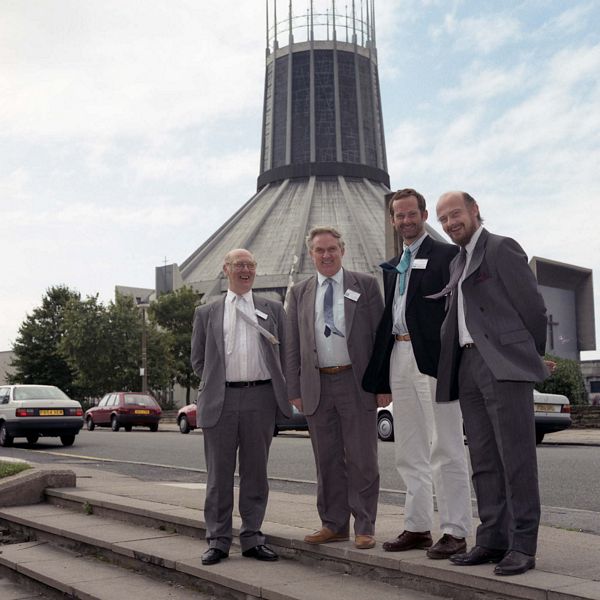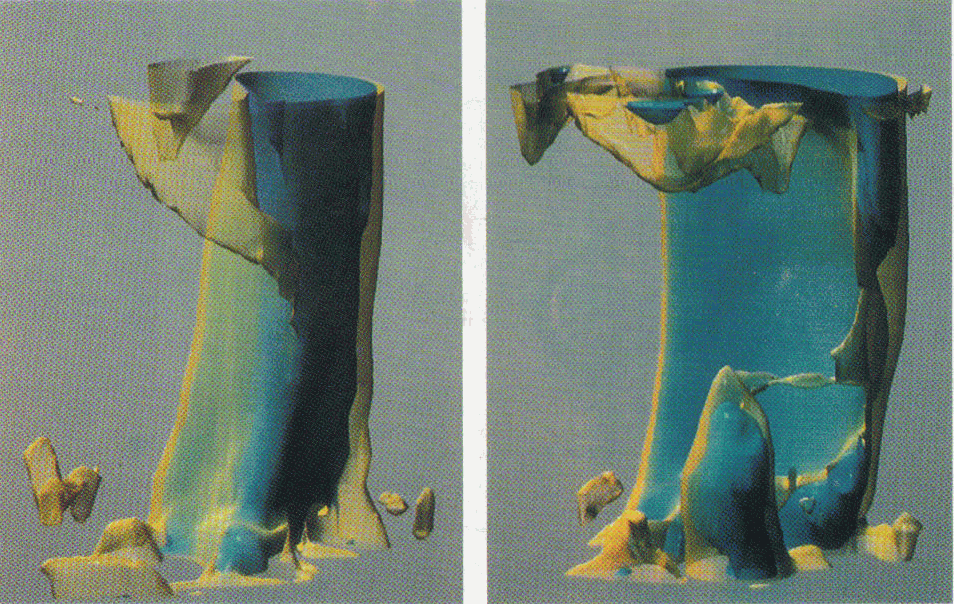

At its Council meeting on 10 June, SERC agreed the procurement of a Cray Y-MP8I/8128 supercomputer to be installed at the Atlas Centre of the Rutherford Appleton Laboratory.
The new supercomputer replaces a five year old Cray X-MP/416 and has about three times the power of its predecessor. The machine will come into service this autumn, and it will be used for the most demanding computations in a broad range of science and engineering projects sponsored by the UK's five Research Councils.
The new supercomputer is being provided as the first stage in a renewed programme of investment in national high performance computing facilities, overseen by the Advisory Board for the Research Councils and managed by SERC.
In the immediate future, the new Cray will enable important research work, whose progress has been slowed recently by the intense competition for the present supercomputing resources, to proceed more quickly. These include major projects in oceanographic and atmospheric science which will help our understanding of climatic behaviour, studies of the structures of new materials and processes that are important scientifically, and the realistic simulation of complicated structural and fluid flow problems in engineering applications.
The new facility is likely to attract completely new types of project, and it may also enable scientists to tackled in this country some of the large projects which could hitherto only be tackled on facilities in other countries.

The SERC/Department of Trade and Industry (DTI) Initiative in the Engineering Applications of Transputers (the Transputer Initiative) came to a formal close in March this year. It began in April 1987 on the recommendation of a working party report of October 1986. Its aim was to promote and support the use of transputers, primarily in British industry and academic institutions, to the overall benefit of the British economy. The remarkably short time taken to start the programme indicated the top priority assigned to it by Engineering Board. The initiative achieved high worldwide visibility and gave exceptional value for its modest funding of £2 million from SERC and £1 million from DTI. It attracted substantial additional revenue: £5 million income to Transputer Centres, £1 million support from host academic institutions and £1 million industrial sponsorship.
Six Transputer Centres were established by the initiative: at Strathclyde University, Queen's University of Belfast with Ulster University, Sheffield University with Sheffield City Polytechnic, Liverpool University, Southampton University and Rutherford Appleton Laboratory (RAL). These centres provided the main industrial interface. Their high level of activity in consultancy and products for industry and British government and in European Commission-funded research projects generated an income of £5 million.
Some of their most visible projects -including database work for TSB Bank plc, image processing and control for British Steel plc and computational fluid dynamics for British Aerospace plc - featured in a video produced to assist centres with marketing.
The Centres also ran more than a hundred scheduled and bespoke courses to industrialists and academics on a wide range of transputer topics. Five of the Centres continue to flourish through their own revenue-generating ability.
The single most substantial service provided to academics was an equipment loan pool supplying 165 loans lasting between four and 12 months. An independent review found that this was an extremely popular and cost-effective service and identified the average cost per loan as just £2,900. Researchers, many with no previous transputer experience, were able to develop their ideas quickly and consequently (in over 66% of cases) to submit grant applications, purchase equipment and publish papers. All suitable loan applications (75% of the total) were satisfied, the majority within three months of submission. Popular areas were numerical analysis, signal processing, tools and theories, simulation, graphics and image processing. A total of 105 loans resulted in reports made widely available through the initiative while 56 also generated software for a library operated first by the Transputer Centre at Sheffield and later by that at Liverpool.
An early decision in the life of the initiative was to start an annual international conference and exhibition series. Transputer Applications (TA) events took off dramatically and proved to be far more popular than anyone had dared to expect. Success was attributable to the dedication and enthusiasm of staff at the Liverpool, Southampton and Strathclyde Transputer Centres who organised TA'89, TA'90 and TA'91. Committee members of the initiative's Transputer Applications Community Clubs (TACCs) in image processing and real time control gave valuable additional assistance. By 1991 attendance had reached almost 500, representing 26 countries, while the number of presented papers rose to 146 (from 190 submitted) and companies supporting the exhibition reached 40. The range of topics was huge: control, graphics, image processing, simulation, biomedical, robotics, CAD, databases, communications and many others. Expanding into the wider European scene, the fourth meeting (PACTA'92) has been moved outside Britain to Barcelona.
The distinctive red cover of the Mailshot became familiar to over 3,000 industrial and academic readers across the world. Starting as a loose collection of news items in October 1987, it first appeared in its regular monthly form in January 1989 and soon became recognised as 'the definitive transputer journal'. News from the initiative, product updates, technical articles and a diary section all contributed to the high value placed on it by suppliers and users alike. More than 120,000 copies have been distributed worldwide since it began.
The initiative championed the cause of transputers in many other ways. Sixteen development contracts were commissioned covering assessments, feasibility studies and porting existing commercial software to transputers. All resulted in reports made widely available through the Mailshot. Residential workshops for around 50 invited delegates covered development environments, applications and software standards. TACCs and working groups were formed following the second and third workshops. Three demonstrators - a hexapodal robot, a non-destructive fault detector and a signature verifier - were developed through the TACCs. The first featured on Tomorrow's World and Appeared in the credits of an entire series. Initiative seminars attracted an average of 70 delegates, peaking at 200. More than 400 copies of a floppy disc demonstrator commissioned by the initiative were distributed on request. The Northern Ireland Centre organised a users' group and the Liverpool Centre established a popular Parallel Club. The initiative was represented at shows such as Techmart and PC User.
The success of the Transputer Initiative led to the formation of a new organisation called TTC (The Transputer Consortium) funded by industry and run from RAL. Among its many activities it will publish the first refereed international transputer journal and will sponsor the World Transputer Congress - springing from the Transputer Applications series.
Dr Raymond Fawcett
This issue of the SERC Bulletin ended with the following pictures which were taken from a report of a working group of SERC's Supercomputing Management Committee into "Research requirements for high performance computing". The computations had been done on the Cray X-MP/416 at the Atlas Centre by the UGAMP (Universities Global Atmospheric Modelling Programme) collaboration and the images were produced using the Atlas Centre's video facility.
